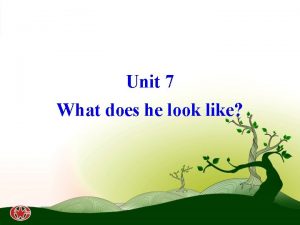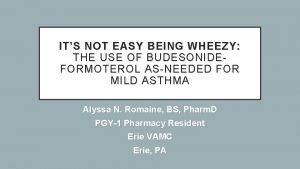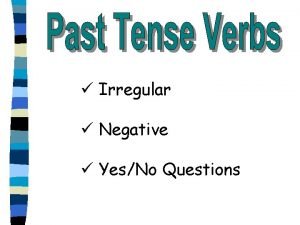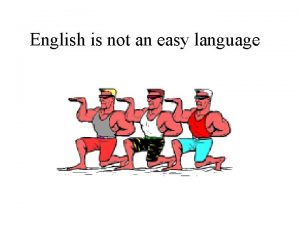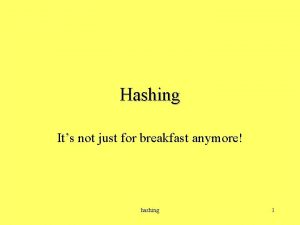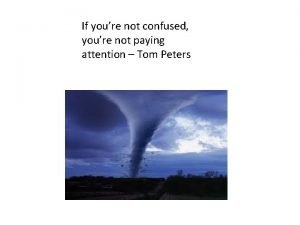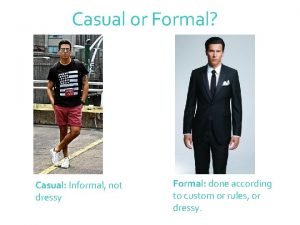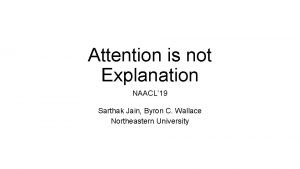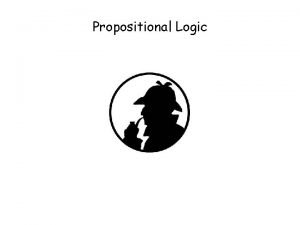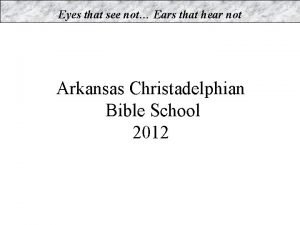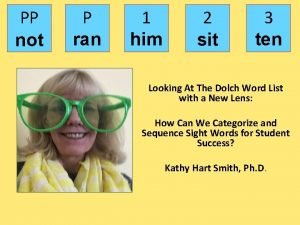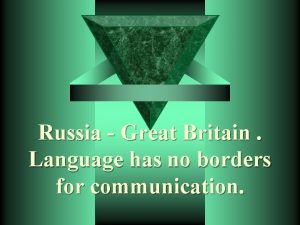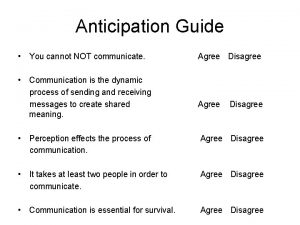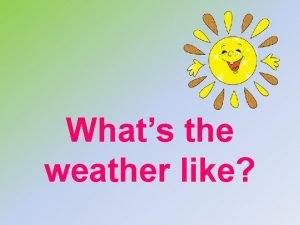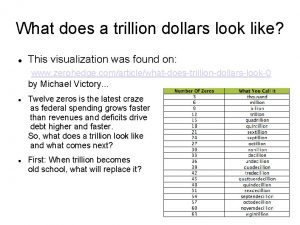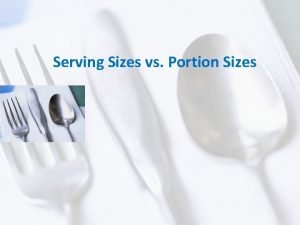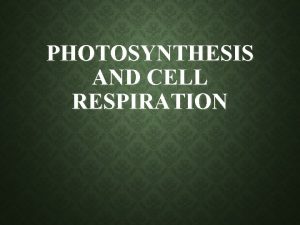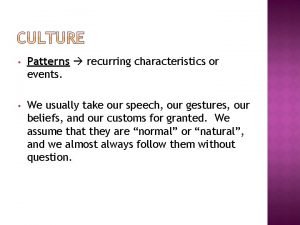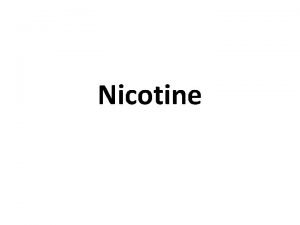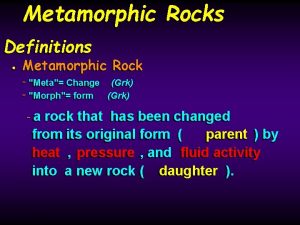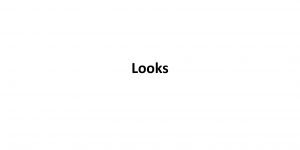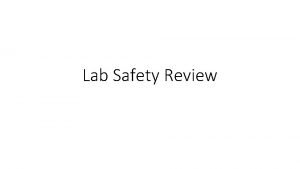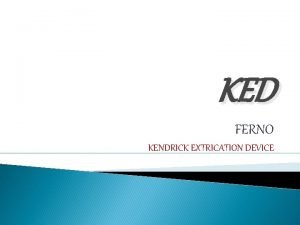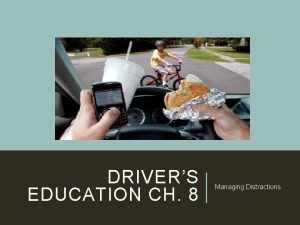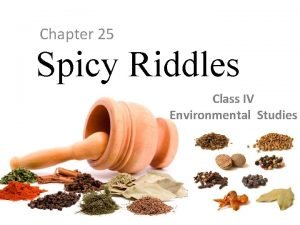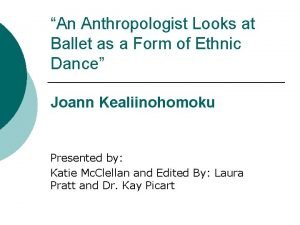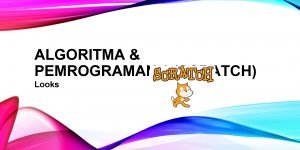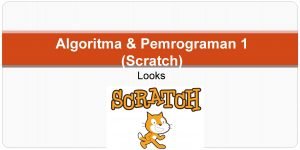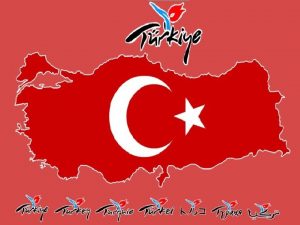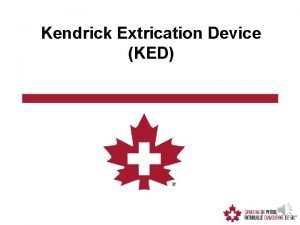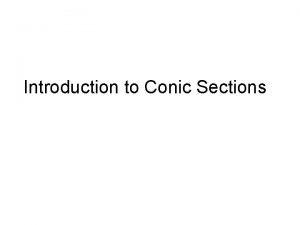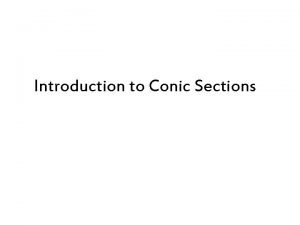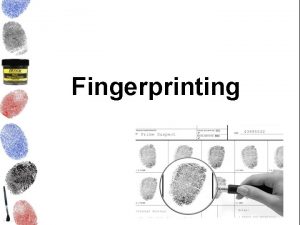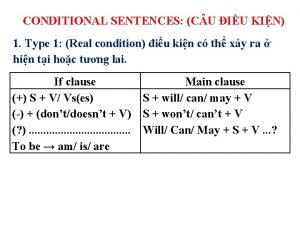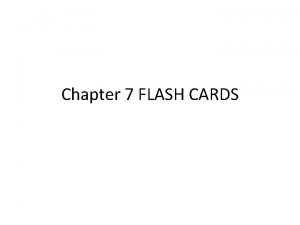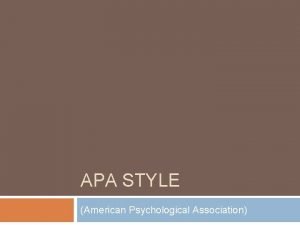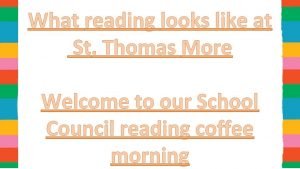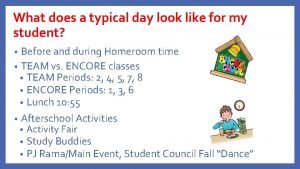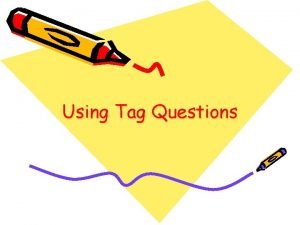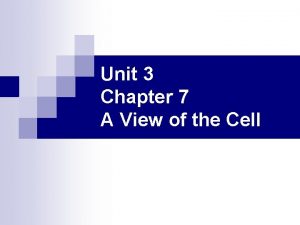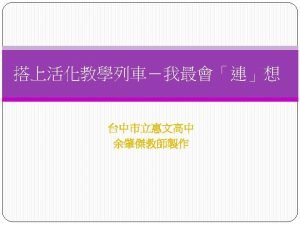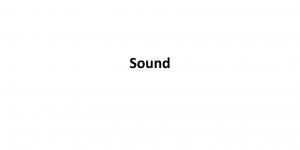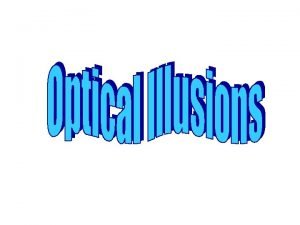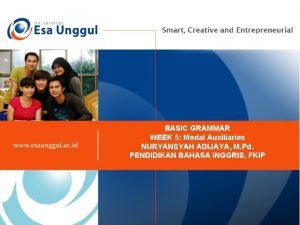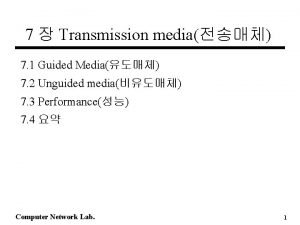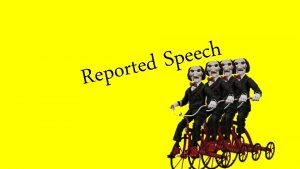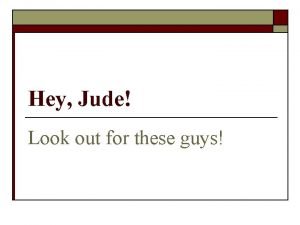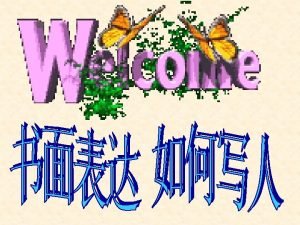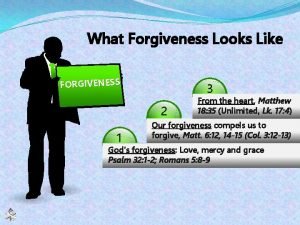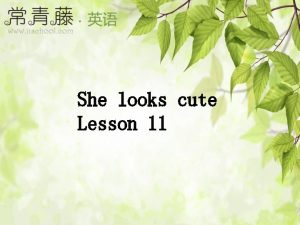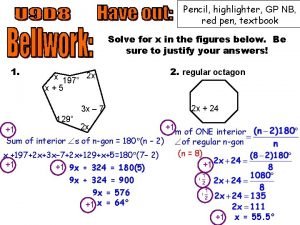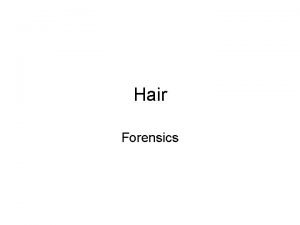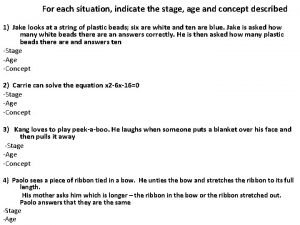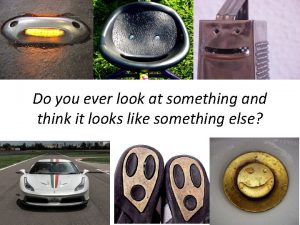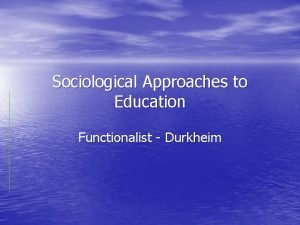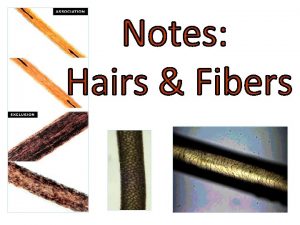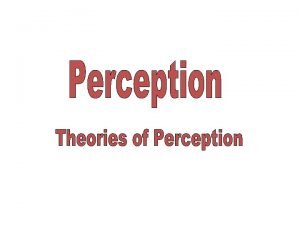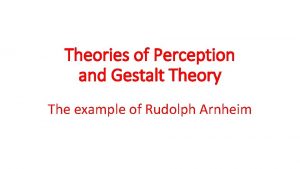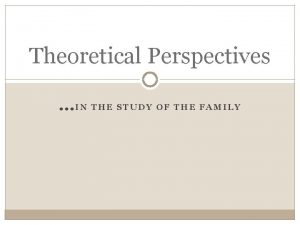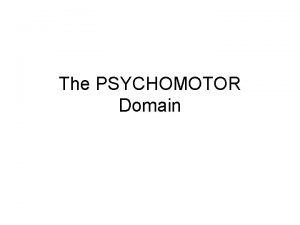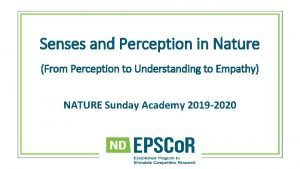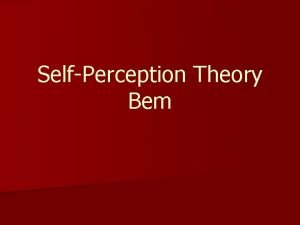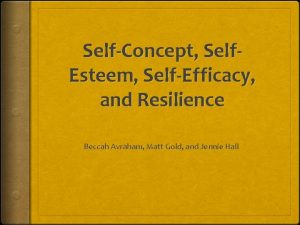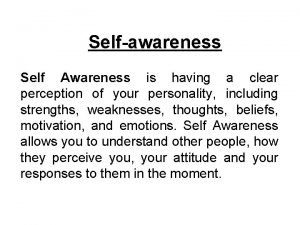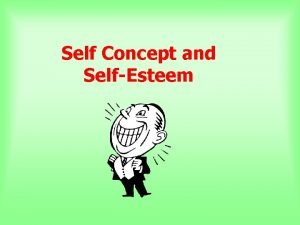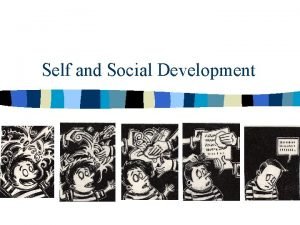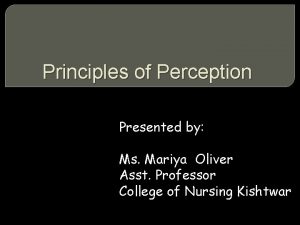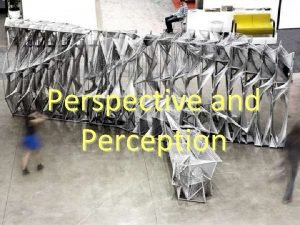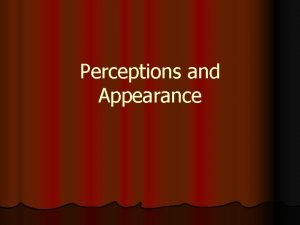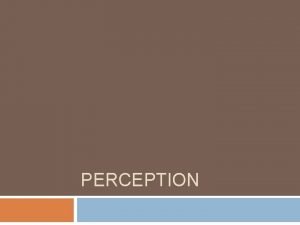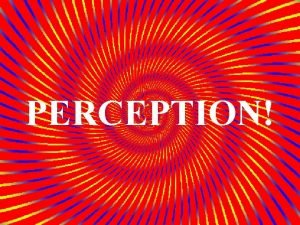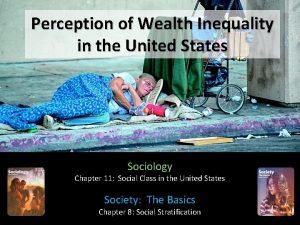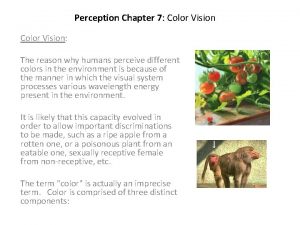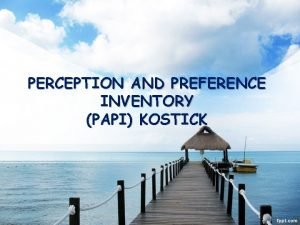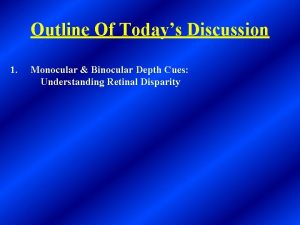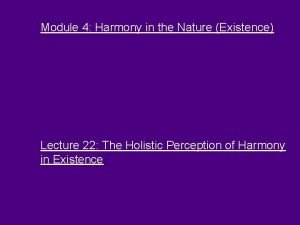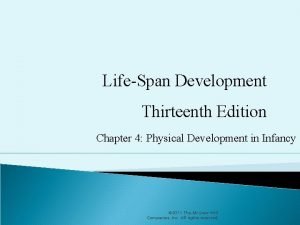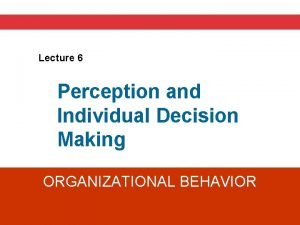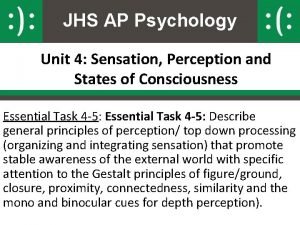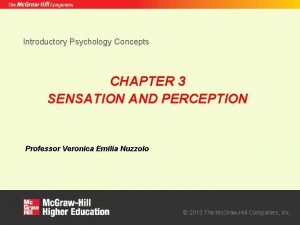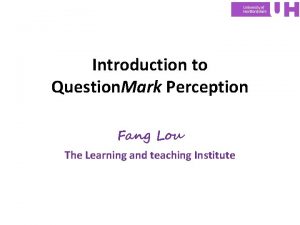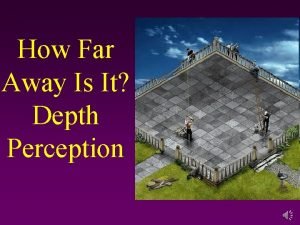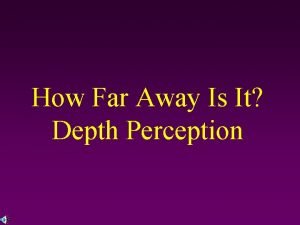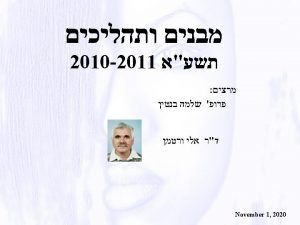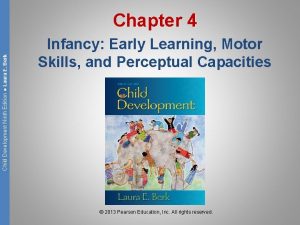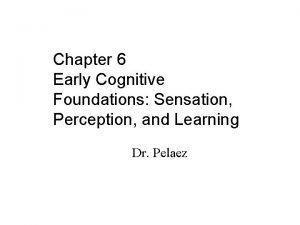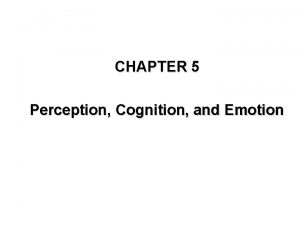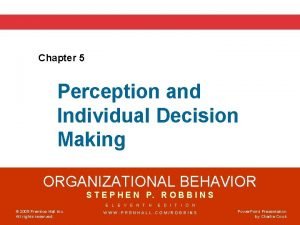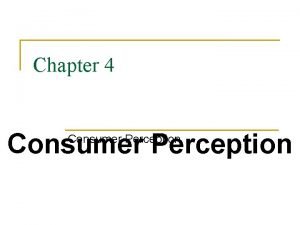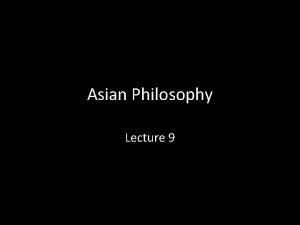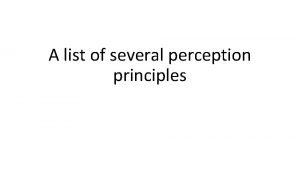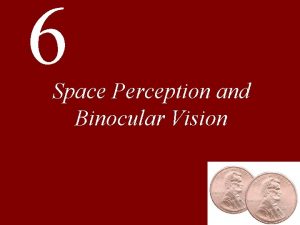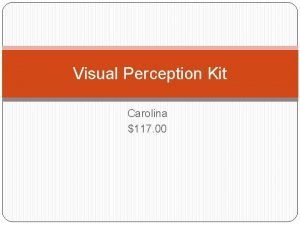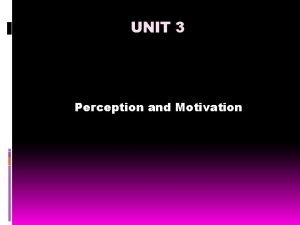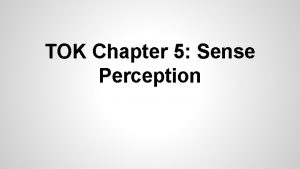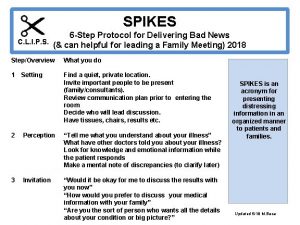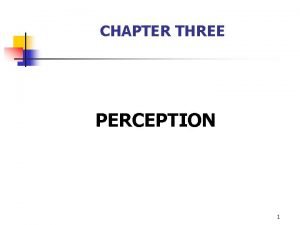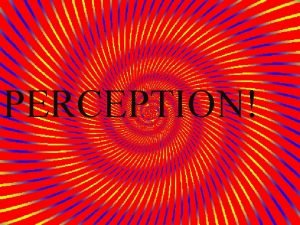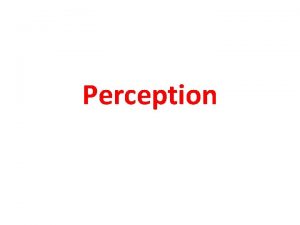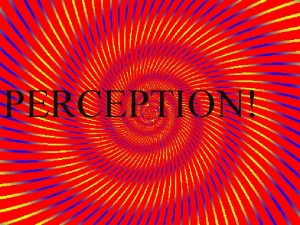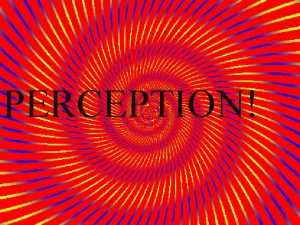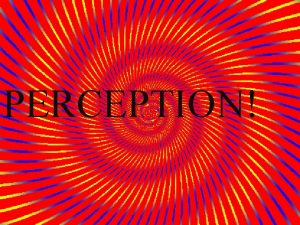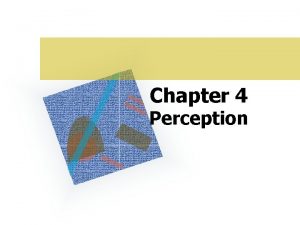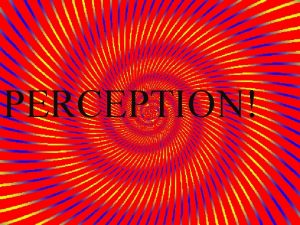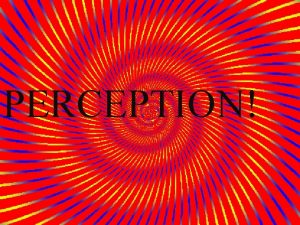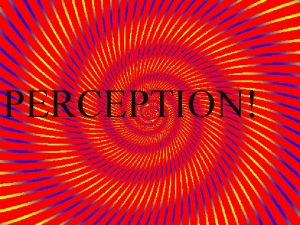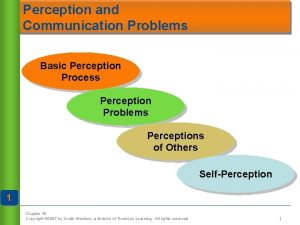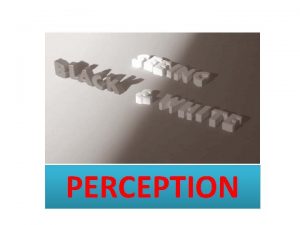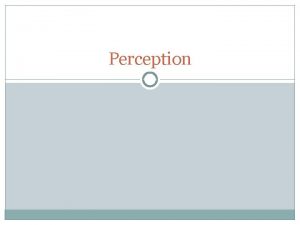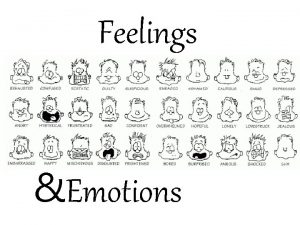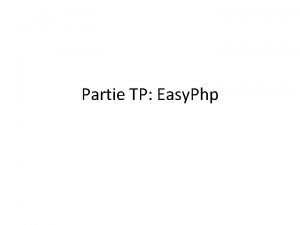Perception Its not as Easy as it Looks











































































































































- Slides: 139

Perception

It’s not as Easy as it Looks

Sensation and Perception n n Sensation q The process through which the senses pick up visual, auditory, and other sensory stimuli and transmit them to the brain; sensory information that has registered in the brain but has not been interpreted Perception q The process by which sensory information is actively organized and interpreted by the brain

We see the world with our brain n How Light Enters the Eye

Interpretation What do you see?

Interpretation Now what do you see?

Attention and Perception n n Your perception of a rich visual environment is an illusion! You actually are only aware of the small part of the scene that you are attending to

Attention and Perception n Change Blindness/Inattentive Blindness q n you can’t notice changes in a scene unless you attend to the location of the change Bet you can't do this

Illusions n An illusion occurs when what you perceive is not what is really out there q n Optical illusions occur when the physical stimulus itself is distorted – but interpreted correctly by the brain! But sometimes the brain gets it wrong – and we see a visual illusion q Visual Illusions happen in your visual system – the physical stimulus is correct but misinterpreted by the brain.

Optical and visual illusions Optical Illusion Visual Illusion

Visual illusion

Categories of visual illusion n Gregory identified FOUR categories of visual illusion. q q Ambiguous figures Paradoxical figures Fictitious figures Distortions

Ambiguous figures n n n the same input leads to different outputs due to switches in attention. For these figures we make two alternative hypotheses about what sort of object could result in that particular pattern of information on our retina. We can only fulfil one of these hypotheses at a time, but it depends which one

Ambiguous figures – 1 Necker Cube n In which direction is the cube facing?

Ambiguous figures – 2 Rubin vase

Ambiguous figures – 3

Paradoxical figures n n n Figures we assume are “real” 3 -D objects are impossible in the “real world”. We appear to be unable to accept that they are simply lines drawn on a flat surface, in two dimensions Our hypothesis appears to be that there a number of depth cues in the drawings, so they must represent 3 -D objects and we attempt to interpret the objects in three dimensions.

Paradoxical figures - Impossible Staircase

Fictitious figures n n We see what is not there, not actually given in the stimulus array. We appear to construct perceptual hypotheses based on our best guess about the whole visual array, which gives us a perception of an object that is not actually there!

Fictitious figures - Kanizsa triangle

Distortions n Here we make a perceptual mistake q n We attempt to understand the data in terms of how we normally interpret the world but this misleads us and we make mistakes. It seems our perception is greatly affected by the context in which an object is seen - we make a hypothesis based on what we normally experience in these circumstances and that hypothesis is mistaken.

Distortions – 1 Muller-Lyle

Explanation? n n Gregory – we impose our knowledge of a 3 D world onto a 2 -D image. Day – ‘conflicting cues theory’ i. e. we have to make sense of 2 cues when judging the length of the lines – the actual length of the line and the overall length of the figure.

Distortions – 2 Ponzo

Distortions – 2 Ponzo n Ponzo

Distortions – 3 Titchener n Another example of a distortion illusion is Titchener’s circles

Explanation n Your brain usually tries to increase differences between things to make it easier to tell them apart. q q n In the left hand image to make it even easier for you to tell the large outer circles apart from the smaller middle circle, your brain makes the difference between them even larger. This makes the middle circle look even smaller. In the right hand image to make it even easier for you to tell the small outer circles apart from the larger middle circle, your brain makes the difference between them even larger. This makes the middle circle look even bigger. Comparing the middle circles, one looks larger than it really is while the other one looks smaller than it really is.

You decide n On the next slides decide which type of illusion is being created!

Penrose Triangle Ambiguous? Paradoxical? Fictitious? Distortion?

Ambihelical Hexnut Ambiguous? Paradoxical? Fictitious? Distortion?

? Ambiguous? Paradoxical? Fictitious? Distortion?

The Pool Ambiguous? Paradoxical? Fictitious? Distortion?

Penrose Trident Ambiguous? Paradoxical? Fictitious? Distortion?

? Ambiguous? Paradoxical? Fictitious? Distortion?


? n Keep staring at the blue dot in the middle of the picture.

? n In which direction is the horse facing?

Morinaga’s paradox

Morinaga’s paradox n In reality both judgments, of vertical alignment and of the horizontal gaps, are illusions. q q The tips of the arrows are perfectly aligned vertically, and the horizontal gaps between the three sets of arrowheads are all exactly the same. (This is a version of the Muller-Lyer illusion!)

Variation with Ambihelical Hexnut Ambiguous? Paradoxical? Fictitious? Distortion?

The Terrace Ambiguous? Paradoxical? Fictitious? Distortion?

? Ambiguous? Paradoxical? Fictitious? Distortion?

Ehrenstein Illusion Ambiguous? Paradoxical? Fictitious? Distortion?

? Ambiguous? Paradoxical? Fictitious? Distortion?

? Ambiguous? Paradoxical? Fictitious? Distortion?

Zöllner illusion Ambiguous? Paradoxical? Fictitious? Distortion?

Poggendorff Illusion Ambiguous? Paradoxical? Fictitious? Distortion?

Apparent Motion n n Object disappears and reappears somewhere else Visual system “interpolates” motion in between

Is this a spiral ? Ambiguous? Paradoxical? Fictitious? Distortion?

Frazer Spiral

? n n Look just above or below the circle. Keep looking forward and move your head to the left and the right.

? n n Are you looking into a tiled room? Or at a cube ?

How the brain allows us to see a stable world n The brain allows us to see a stable consistent world using: q Visual constancies and q Depth cues

What shape is this door?

What colour are the squares?

Who is the taller?

Retinal images n n Our perception of objects is far more constant or stable than the images that reaches our eye. The images coming into our eyes change with the movement of: q q n the eyes, the head, position, the changing light. What would happen if we relied only on retinal images for visual perception?

Keeping the world constant n If we relied only on retinal images for visual perception we would always be: q q q conscious of people growing physically bigger when they came closer, objects changing their shapes whenever we moved, and colours changing with every shift in lighting conditions

Visual constancies n Visual constancy is the ability to recognize n There are 3 types of visual constancy that an object remains the same even when it produces different images on the retina (it looks different) 1. 2. 3. Size Shape Colour

Who is the taller?

Size constancy n Under normal conditions we know that the tiny people, cars, and buildings we see at a great distance are not miniatures, but appear small because they are far away – this is size constancy.

What shape is this door?

Shape constancy n a door appears to change shape as it is opened. Shape constancy ensures that we are not typically conscious of this

What colour are the squares?

Colour constancy n Colour constancy makes sure we don't realise/notice that squares A and B have the same colour.

Size constancy example (a)

Size constancy example (b)

Size constancy example (c)

Size constancy example (d)

Size constancy example (e)

The Role of Expectation - 1 n n Expectation can influence perception. Showing participants an ambiguous figure '13' set in the context of letters or numbers can affect what is “seen”

Continued

The Role of Expectation - 2

The need to perceive distance/depth n n Our survival as individuals and as a species depends on the ability to judge distance and depth We need to locate objects in space and perceive depth since this ability is essential for almost all activities, e. g. q q q navigating/avoiding objects jumping catching/throwing reaching/grasping size judgements and recognition

The problem of distance/depth n n The distance of an object (or its depth in the visual field) depends on 3 -dimensional perception BUT the image that falls on our retina is 2 dimensional!!

How do we perceive distance/depth? n n n Therefore, we need to be able to translate a two dimensional retinal image into a three dimensional picture This is something that humans – and many other species as well - can do with remarkable accuracy. SO, then, how do we perceive DEPTH and DISTANCE?

Visual Cues – Binocular/Monocular n We use many cues to determine depth and distance, which fall into two types; q q some of the cues depend on us having two eyes and are known as binocular cues, others depend on cues from one eye only and are known as monocular cues.

Binocular vision n n Uses BINOCULAR depth cues – i. e. information from BOTH eyes. Demonstration: q q n Hold two pencils at arm’s length away from your body. Close one eye. Try to bring the pencils together so that the points touch each other. Repeat this with the other eye closed and then with both eyes open. Is it easier to do this with one eye open or with both eyes open? Why?

Binocular depth cues n Depth cues that depend on two eyes working together q 1. Convergence n q Occurs when the eyes turn inward to focus on nearby objects – the closer the object, the greater the convergence 2. Retinal disparity (or Binocular disparity) n Difference between the two retinal images formed by the eyes’ slightly different views of the objects focused on

Binocular cues - Convergence n n n Our brain uses information from the eye muscles in order to provide us with information about how far away the object is. NB. Convergence only works for objects which are closer than about 10 feet away After that the difference in convergence is too slight to provide useful data

Binocular cues - Retinal Disparity n n n Since our eyes are about 2 inches apart, each one receives a slightly different image of any object we are observing. The nearer the object, the greater the retinal disparity. The brain is able to use the amount of retinal disparity as an indication of depth and distance

Monocular depth cues n Depth cues that can be perceived using only one eye

1 Interposition n When one object partly blocks your view of another, you perceive the partially blocked object as farther away

2 Linear perspective n Parallel lines that are known to be the same distance apart appear to grow closer together, or converge, as they recede into the distance

3. Relative size n Larger objects are perceived as being closer to the viewer, and smaller objects as being farther away

4 Height in the visual field

5. Texture gradient n Near objects appear to have sharply defined textures, while similar objects appear fuzzier as they recede into the distance

An Example of Texture Gradients Creating Depth

6. Atmospheric (aerial) perspective n Objects in the distance have a bluish tint and appear more blurred than objects close at hand (caused by the density of water vapour in the atmosphere which makes colours appear “cooler”)

7 Motion parallax When you ride in a moving vehicle and look out the side window, the objects you see outside appear to be moving in the opposite direction n Objects seem to be moving at different speeds – those closest to you appear to be moving faster than those in the distance n

Art and Illusion n n Many artists have used visual illusions in their work Most famous: q q q Dali Escher Ocampo

Dali - 1

Dali - 2 Paranoiac Visage - The Postcard Transformed

Dali - 3 n Mysterious Mouth Appearing in the Back of My Nurse

Dali - 4 Transformation of 'Antiques' Magazine Cover into the Apparition of a Face

Dali - 5

Escher - 1

Escher - 2

Escher - 3

The General’s Family - Ocampo n There are nine faces in this picture

Mona Lisa’s chair - Ocampo

Perceptual organisation n n When we perceive the world we impose an order and structure which cannot be found in any of its particular units or components. The processes by which we impose order or structure on our sensations, making them into coherent whole, are referred to as processes of perceptual organisation.

Laws of organisation n The Gestalt psychologists put forward a set of laws of organisation: q n i. e. general rules by which we perceive shapes and forms and which the Gestalists believe are innate. The laws of organisation are not hard and fast rules which always apply, neither are they explanations; but they do provide a reasonably accurate description of how we usually perceive the world.

Perception Theories - Gestalt n Key Points: q q q We perceive objects as well-organized patterns rather than separate components. “The whole is greater than the sum of it’s parts. ” Based on the concept of “grouping”.

1 Figure/Ground n We perceive things in terms of figure and (back)ground. q n n e. g. If you look around the room, you may see books on a table, or a clock on the mantlepiece. All of these are figures which have a definite location in space. These figures stand out against the background which has no definite shape and seems to continue behind the figures.

Rubin vase - 1 n Occasionally (usually in specially designed pictures) we have difficulty in separating figure from ground, and experience an illusion, e. g. the Rubin vase

Rubin vase - 2 n This illusion can also be affected by the principle of smallness: q i. e smaller areas tend to be seen as figures against a larger background.

Figure/Background n n n Figure – seen as the foreground Ground – seen as the background Contours – “belong” to the figure

Camouflage n Camouflage techniques rely on making the figure and ground indistinguishable.

The Law of Proximity n When we see things that are close together we tend to see them as a group rather than as separate items. q e. g. we tend to three pairs of lines and a single line rather than seven – separate - lines.

The Law of Closure - 1 n We tend to see figures as a complete whole even though there are gaps. q E. g. we see the shape below as a circle even though it is not joined up.

The Law of Closure - 2

The Law of Similarity - 1 n Things that are in some way alike, in terms of shape, colour or size, are usually perceived as belonging together as part of a pattern.

The Law of Similarity - 2 n This image is seen as consisting of noughts and crosses grouped together in horizontal lines, not as noughts and crosses alternating with each other in vertical columns X X X X X O O O O O

The Law of Continuity n n Lines and patterns tend to be continued in space. In this figure, you are more likely to perceive a single line partially covered by a circle rather than a circle and two separate lines.

The Law of Common Fate n When single elements are moving in the same direction at the same speed they are seen as a whole. q e. g. a flock of birds flying overhead is seen as one element, not as a group of individual birds.

‘Good form' and ‘Belonging' n These ‘laws’ can essentially be reduced to two: q q n n 1. the law of Pragnanz or 'good form‘, and 2. the law of 'belonging'. The law of Pragnanz refers to the fact that we tend to see things as a coherent whole, thus we close gaps and make objects more symmetrical. The law of belonging specifies the ways in which we group certain elements within a stimulus pattern.

Summary - 1 n Figure-ground q n Similarity q n Organization depends on what we see as figure (object) and what we perceive a ground (context). Objects that have similar characteristics are perceived as unit. Proximity q Objects close together in space or time perceived as belonging together.

Summary - 2 n Continuity q n We tend to perceive figures or objects as belonging together if they appear to form a continuous pattern. Closure q We perceive figures with gaps in them to be complete

Summary - 3 n n n Gestalt laws of Grouping organize the visual scene into units The Law of Goodness of Figure creates the simplest most meaningful pattern Figure/Ground relationships define important parts of the scene

Gregory’s theory of visual illusions n n Gregory (1963) suggests that some visual illusions can be explained in terms of misapplied perceptual constancy. Within the Ponzo illusion there are cues which indicate that this represents a three dimensional scene

Ponzo Illusion n The lines at the side could be parallel lines disappearing into the distance. One horizontal line above another could represent different heights in the visual field. Both of these are depth cues.

Ponzo Illusion n n These two cues, then, suggest that the top line is further in the distance than the line beneath it. Since the retinal image of both is the same size, the principal of size constancy encourages us to perceive the top line as being longer than the bottom one.

Muller-Lyer illusion n Gregory has suggested that, in the absence of other cues, the figure with the fins diverging represents an inside corner and the one with the fins converging represents an outside corner

Muller-Lyer illusion n n Past experience indicates that a vertical line between diverging arrowheads is farther away than the ceiling and floor lines represented by the arrowheads. Conversely, converging arrowheads suggest that the vertical line is closer than the lines receding from it.

Muller-Lyer illusion n Since the two lines appear to be at different distances but are the same retinal size, the one which appears to be farther away is perceived as longer.

Evaluation n n Gregory's theory of misapplied constancy can easily be applied to the Ponzo illusion However, it is more problematic when applied to the Muller-Lyer illusion.

Evidence in favour - 1

Evidence in favour - 2 n This illusion is barely experienced by people who have lived in an environment which has given them little experience of linear perspective, e. g. q q people such as the congenitally blind who have restored sight, and Zulus whose environment consists of rounded buildings and who have little experience of objects with straight edges and right-angled corners.

Evidence against - 1 n n There are several versions of the Muller. Lyer illusion for which this theory cannot account: 1 The illusion still persists if the lines are horizontal, yet this is not the way we perceive the edges of buildings.

Evidence against - 2 n 2. If the lines are removed altogether and only the fins left in place, the distance between the fins with the points facing inwards appears greater than the distance between the fins with the points facing outwards.

Evidence against - 3 n n The illusion remains very strong when the fins are replaced by circles, squares or several other shapes, These obviously cannot be accounted for by architectural features providing misleading depth cues.

Day's theory - 1 n n n Day (1972) has put forward a more general theory which accounts for some types of illusions. We simultaneously use many cues, such as texture gradient, relative size and interposition, to judge distance and depth. According to Day, when some of these cues are so strong that they override others, they can mislead us so that our judgment of depth, distance and size become distorted.

Day's theory - 2 n Examples of a visual illusion explained by Day's theory:

Other theories: Visual Coding n n n Some visual illusions may be caused by coding in the visual system This theory focuses on the way in which certain components of the stimulus are (pre-)coded into the visual system. For example, acute angles are usually judged as being less acute than they really are.

Visual Coding n The illusion shown below involves the perception of acute angles, this could explain the apparent distortion of the lines.



 Its not easy but its worth it
Its not easy but its worth it What does he look like
What does he look like What does he look like
What does he look like It's not easy being wheezy
It's not easy being wheezy Difference of inductive and deductive reasoning
Difference of inductive and deductive reasoning Every quiz has been easy. therefore, the quiz will be easy
Every quiz has been easy. therefore, the quiz will be easy Inductive vs deductive reasoning math
Inductive vs deductive reasoning math Sadlier vocabulary workshop level d unit 1
Sadlier vocabulary workshop level d unit 1 Simple is not always easy
Simple is not always easy Irregular tag questions
Irregular tag questions English is not an easy language
English is not an easy language The emigree poem structure
The emigree poem structure When a train increases its velocity its momentum
When a train increases its velocity its momentum Weather sunny cloudy rainy windy
Weather sunny cloudy rainy windy If its square its a sonnet
If its square its a sonnet Its halloween its halloween the moon is full and bright
Its halloween its halloween the moon is full and bright Its not over
Its not over Its not a
Its not a Its not just anymore
Its not just anymore If you are not confused you're not paying attention
If you are not confused you're not paying attention Casual informal style
Casual informal style Attention is not explanation
Attention is not explanation Being too broad
Being too broad If not p then not q
If not p then not q Just right scale
Just right scale Love is not all imagery
Love is not all imagery Ears that hear and eyes that see
Ears that hear and eyes that see P no l l no l om p pp
P no l l no l om p pp If you can't measure it you cant manage it quote
If you can't measure it you cant manage it quote We will not be shaken we will not be moved
We will not be shaken we will not be moved Not a rustling leaf, not a bird in flight
Not a rustling leaf, not a bird in flight You cannot not communicate
You cannot not communicate Whats weather like
Whats weather like Whats a trillion dollars look like
Whats a trillion dollars look like Songs with personification lyrics
Songs with personification lyrics What does 2 ounces of meat look like
What does 2 ounces of meat look like Which organelle looks like a stack of puffy pancakes
Which organelle looks like a stack of puffy pancakes Recurring characteristics or events
Recurring characteristics or events What nicotine looks like
What nicotine looks like Metamorphic rocks
Metamorphic rocks Foliated texture that looks like blackboard
Foliated texture that looks like blackboard Script looks pada scratch
Script looks pada scratch Does hot glass look the same as cold glass
Does hot glass look the same as cold glass Ked ferno
Ked ferno An example of a biomechanical distraction is
An example of a biomechanical distraction is I look like a nail but a bud am i
I look like a nail but a bud am i Old english example
Old english example An anthropologist looks at ballet
An anthropologist looks at ballet Pada scratch, blok looks digunakan untuk
Pada scratch, blok looks digunakan untuk Apa saja perintah yang dapat ditambahkan melalui looks
Apa saja perintah yang dapat ditambahkan melalui looks Country that looks like a turkey
Country that looks like a turkey Ked slides
Ked slides Introduction to conic sections
Introduction to conic sections Introduction to conic sections
Introduction to conic sections Fingerprints
Fingerprints Language
Language Because you speak english unnaturally
Because you speak english unnaturally He never polishes his shoes, so he never looks smart
He never polishes his shoes, so he never looks smart What organelle looks like a stack of pancakes
What organelle looks like a stack of pancakes How to cite apa example
How to cite apa example An anthropologist looks at ballet as a form of ethnic dance
An anthropologist looks at ballet as a form of ethnic dance What reading looks like
What reading looks like Commas in a sentence
Commas in a sentence Tara schenck
Tara schenck She's beautiful isn't she
She's beautiful isn't she Chapter 7 a view of the cell
Chapter 7 a view of the cell He sounds happy
He sounds happy Blok sound adalah
Blok sound adalah How the world looks
How the world looks She looks pretty sick. i think she go to a doctor
She looks pretty sick. i think she go to a doctor Byronic hero frankenstein
Byronic hero frankenstein Which of this is not a guided media?
Which of this is not a guided media? The lord looks down from heaven
The lord looks down from heaven God looks at the heart meaning
God looks at the heart meaning Build up sentences he like watching tv
Build up sentences he like watching tv That looks delicious darling reported speech
That looks delicious darling reported speech Two digit counting number that looks the same upside down
Two digit counting number that looks the same upside down Hey ju looks
Hey ju looks Chapter 2 europe looks outward
Chapter 2 europe looks outward She looks tall
She looks tall What forgiveness looks like
What forgiveness looks like She looks cute
She looks cute What is a trapezoid
What is a trapezoid Rabbit cuticle pattern
Rabbit cuticle pattern Jake looks at a string of plastic beads
Jake looks at a string of plastic beads Who is being described here
Who is being described here Functionalism looks at
Functionalism looks at Hairs and fibers
Hairs and fibers Moshe looks
Moshe looks Gregory top down theory of perception
Gregory top down theory of perception Gestalt in film
Gestalt in film Perception vs perspective
Perception vs perspective Perception in psychomotor domain
Perception in psychomotor domain Objective perception
Objective perception Nature of perception
Nature of perception Self perception theory bem
Self perception theory bem Self concept vs self esteem
Self concept vs self esteem A clear perception of your personality
A clear perception of your personality Self concept vs self esteem
Self concept vs self esteem Self image vs self perception
Self image vs self perception Chapter 5 sensation and perception
Chapter 5 sensation and perception Principle of adaptability in perception
Principle of adaptability in perception Perspective vs perception
Perspective vs perception Perception checks
Perception checks What does the word perception mean
What does the word perception mean Religious symbols
Religious symbols Selective perception
Selective perception Questions on perception
Questions on perception Perception of wealth
Perception of wealth Perception checking process
Perception checking process Chapter 7 vision and perception
Chapter 7 vision and perception Pa preference inventory
Pa preference inventory Crossed disparity
Crossed disparity Harmony in the nature and existence
Harmony in the nature and existence Rooting reflex
Rooting reflex Perception and individual decision making
Perception and individual decision making Types of perception
Types of perception Perception meaning in psychology
Perception meaning in psychology Question mark perception
Question mark perception Relative clarity perception
Relative clarity perception Cues of depth perception
Cues of depth perception Gestalt reversible figures
Gestalt reversible figures Categorical perception
Categorical perception A subjective perception of vitality and feeling well
A subjective perception of vitality and feeling well Categorical perception psychology
Categorical perception psychology Intermodal perception
Intermodal perception Intermodal perception
Intermodal perception Intermodal perception
Intermodal perception Cognition vs perception
Cognition vs perception What they see
What they see Sensation and perception in marketing
Sensation and perception in marketing Subjective perception of vitality and feeling well
Subjective perception of vitality and feeling well Vaisheshika school of philosophy
Vaisheshika school of philosophy Relative height ap psychology
Relative height ap psychology Relative brightness example
Relative brightness example Binocular vision and space perception
Binocular vision and space perception Carolina visual perception kit
Carolina visual perception kit Motivation and perception
Motivation and perception Sense perception tok
Sense perception tok Spikes protocol
Spikes protocol

